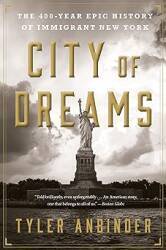
East Broadway
East Broadway
The east end of East Broadway was mostly Jewish,
and the community still retains
a visible presence.
Further west the local culture becomes Chinese.
Many immigrants from Hong Kong arrived in the 1960s,
with immigration from Fuzhou in the 1970s.
Crime was very high along the central and western
parts of East Broadway in the 1970s and 1980s.
Burglaries, robberies, and violent assaults were common.
Crime decreased starting in the 1990s,
and gentrification increased through the 2000s.
Some of this involved mass forced eviction as
new landlords purchased apartment buildings.
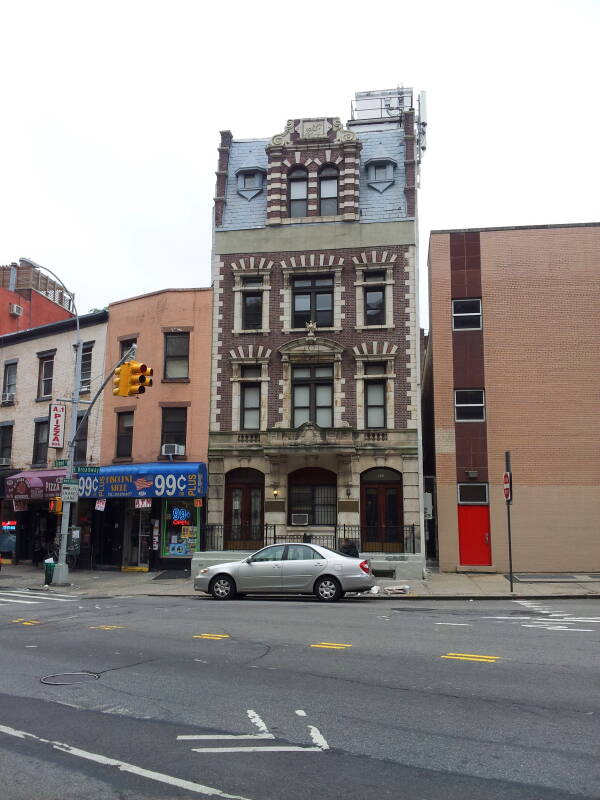
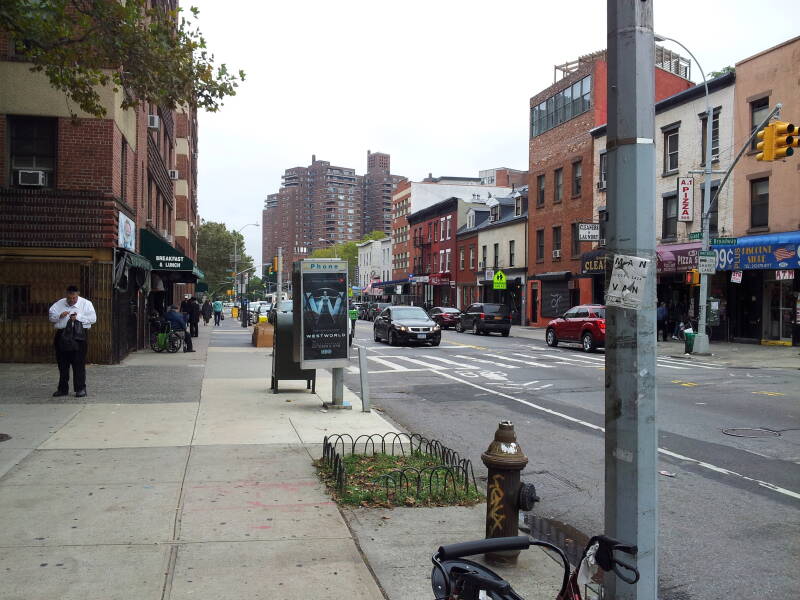
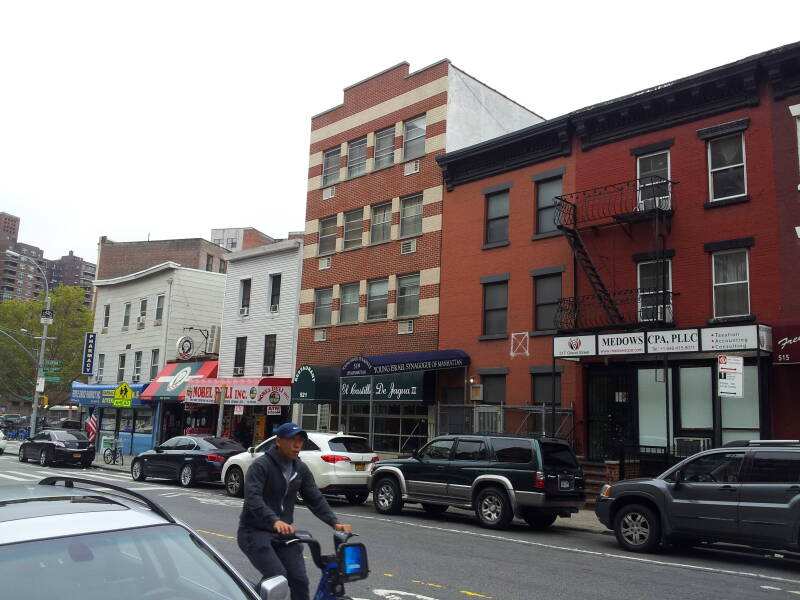
Henry Street Settlement
Social worker Lillian Wald founded the Henry Street Settlement in 1893. It still provides educational and cultural services. It operates four homeless shelters including one for victims of domestic abuse, senior and youth programs, state-licensed mental health and primary care clinics, and it supports the Abrons Arts Center, a set of theater, dance, and art studios across the street. It's at 265 Henry Street near Montgomery, henrystreet.org.
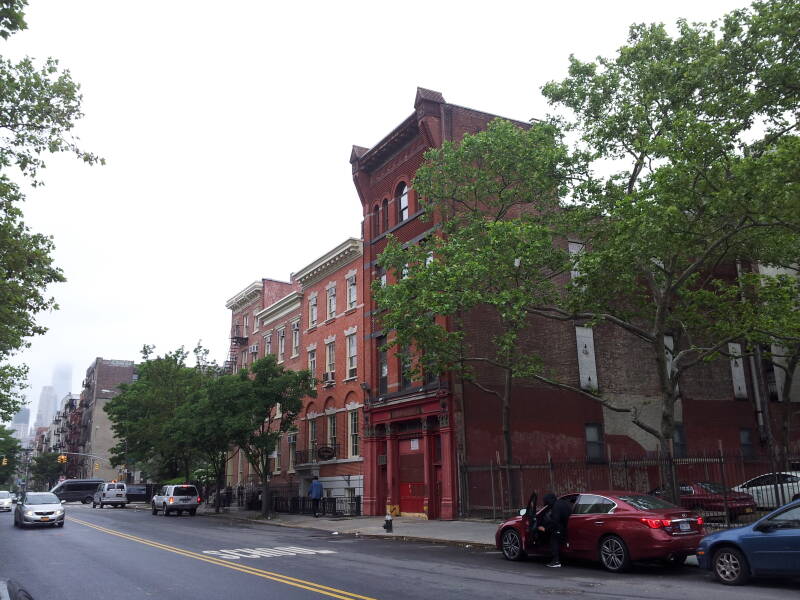

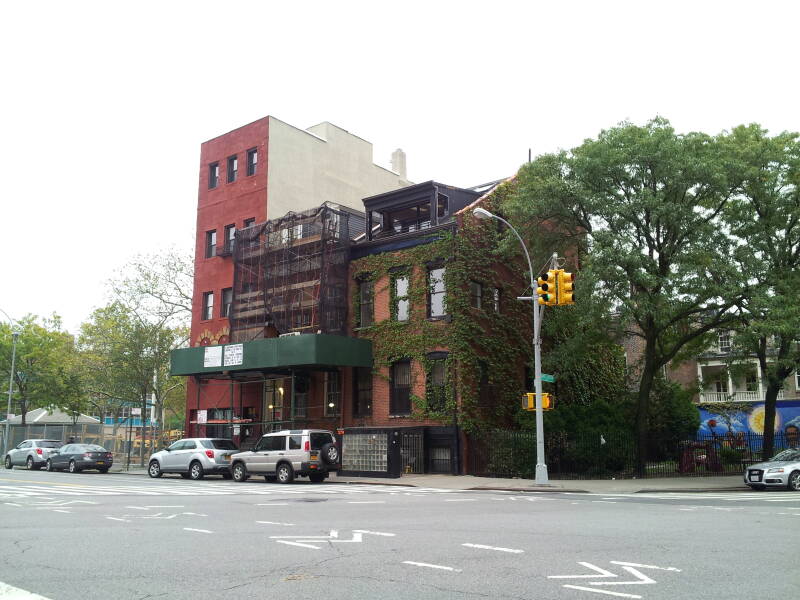
Society of the Supporters of the House of Sages
The Society of the Supporters of the House of Sages was founded in 1922 as a center for prayer, study, and socializing for retired Orthodox rabbis. It was in an Art Deco building at 152 Henry street from 1940 to 1989. In 1989 the Society had shrunk and moved to 283 East Broadway. They sold their former home to the Chung Te Buddhist Association, who converted the former synagogue into a Buddhist temple.
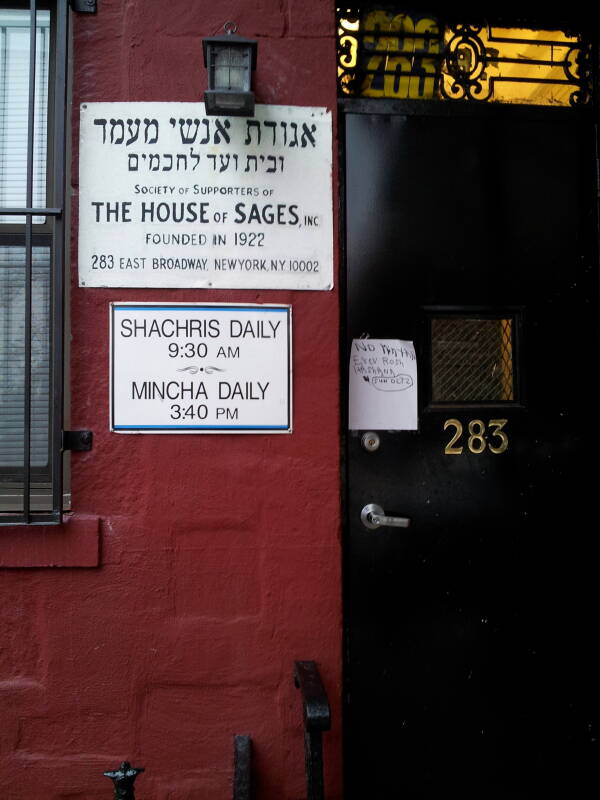
Shtiebel Row
Shtiebel means "little room" in Yiddish. Shtiebel Row is a district along East Broadway between Clinton Street and Montgomery Street with one-room and two-room synagogues in which Hasidic Jews met for prayer, study, and social activities. Several are still active.
The houses at #247 and #249 were built in the 1830s, when this was a well-to-do neighborhood.
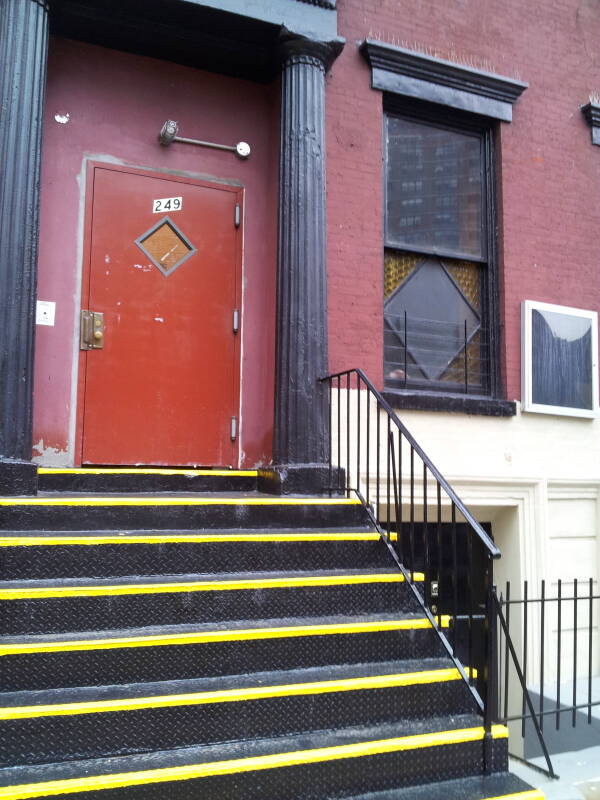
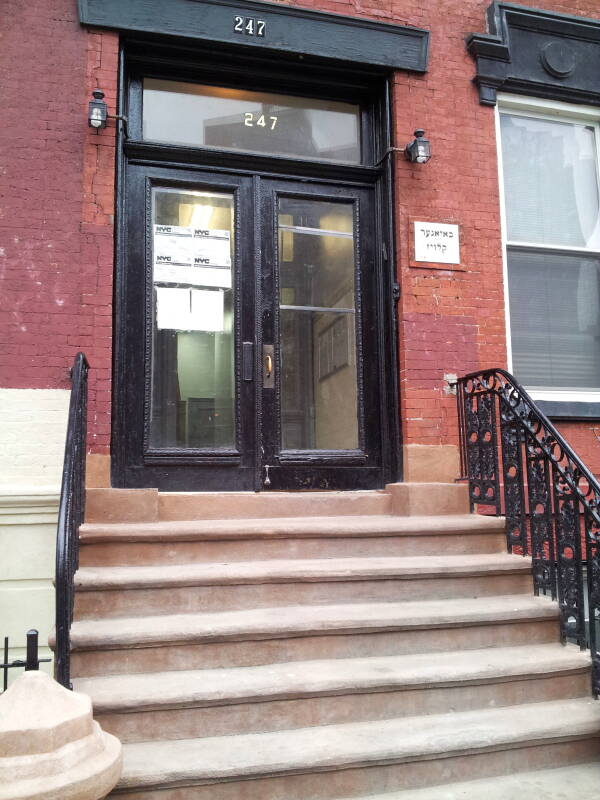
Chevra Zemach Zedek was founded in 1894, and still meets at #241.

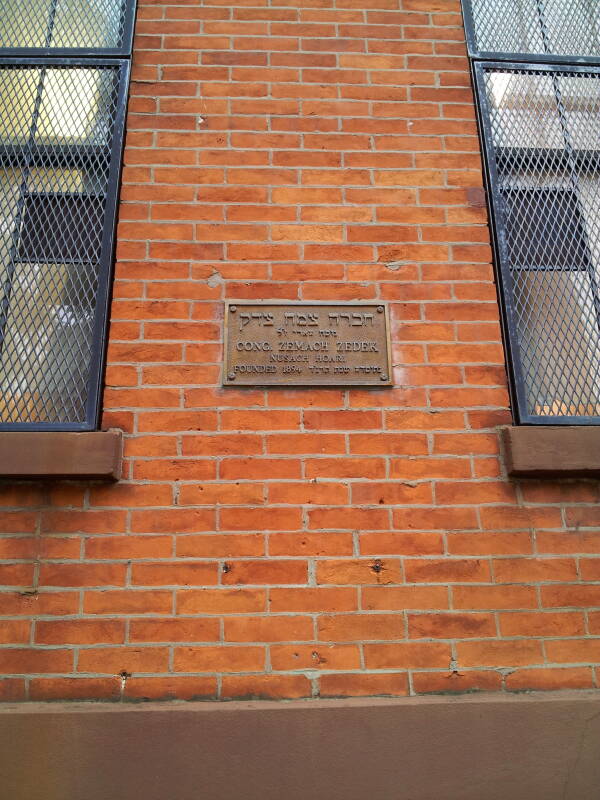

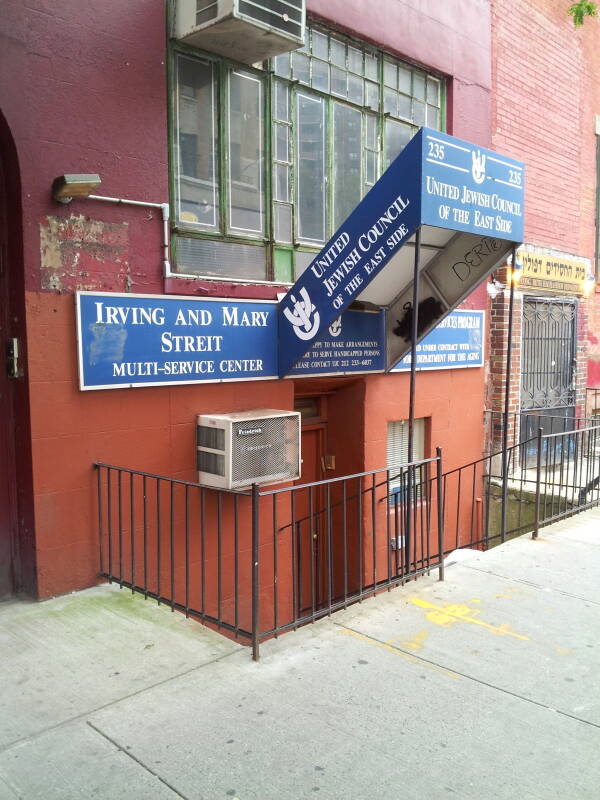
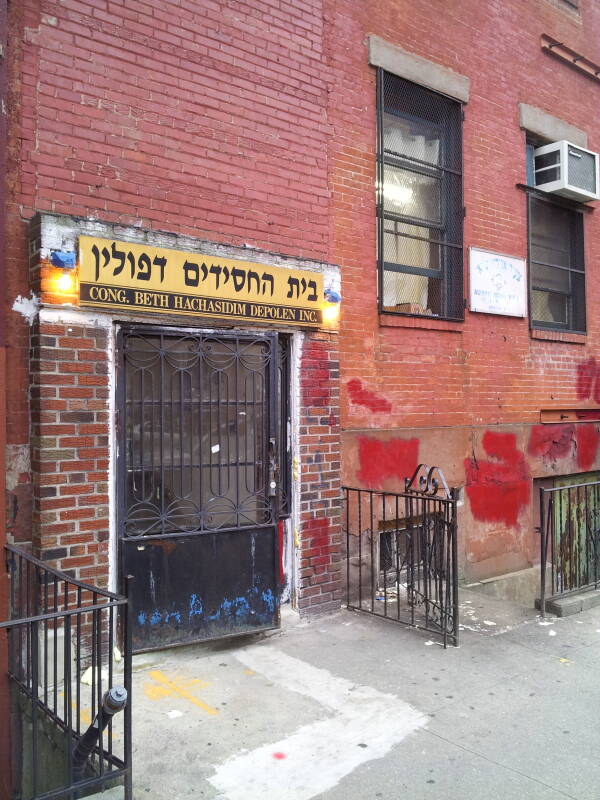

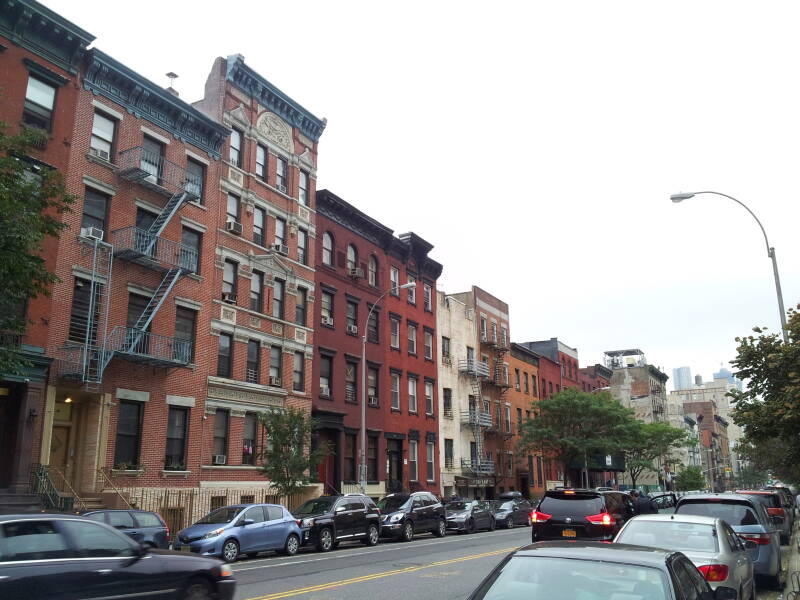
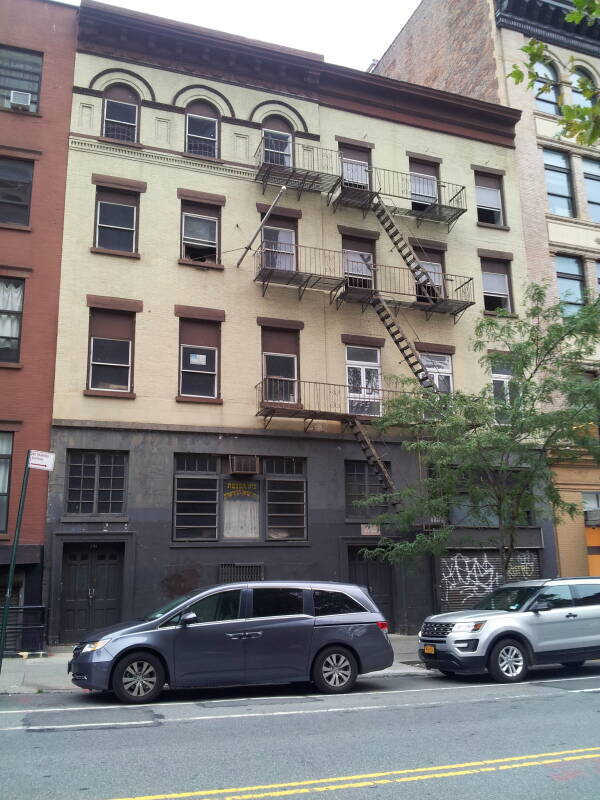
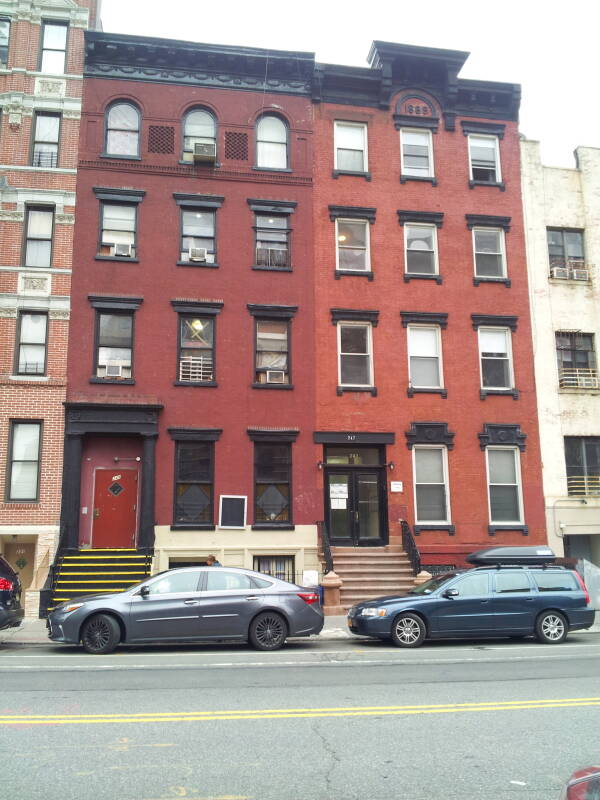
The Bialystoker Center and Home for the Aged opened in 1929. A sign in its lobby quotes Psalm 71, "Cast me not off in the time of old age."

Bialystoker Center and Home for the Aged, 228 East Broadway.
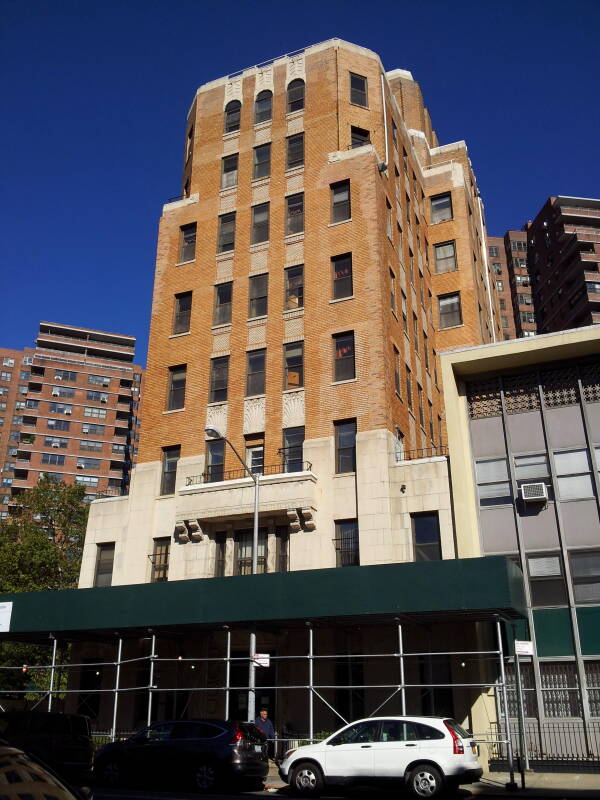
Bialystoker Center and Home for the Aged, 228 East Broadway.

Symbols of the Tribes of Israel at the Bialystoker Center and Home for the Aged.
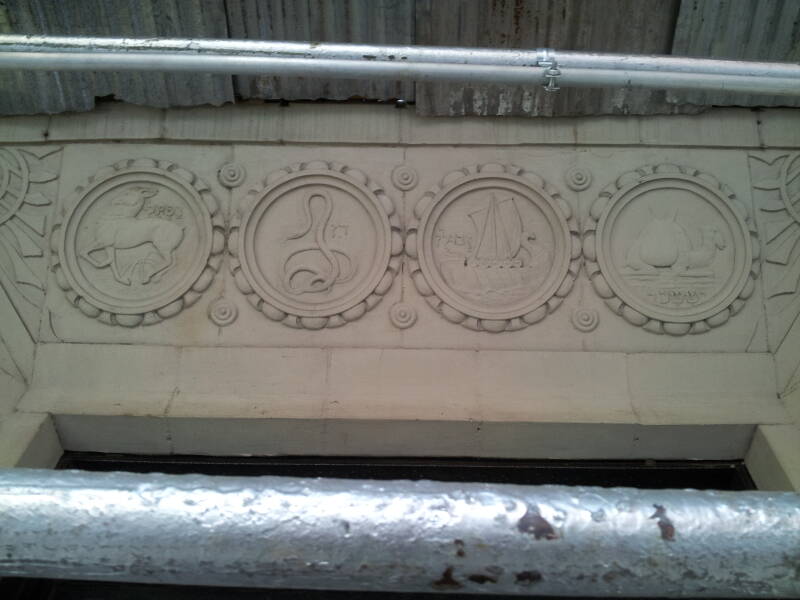
Symbols of the Tribes of Israel, left to right above the door: Naphtali (stag), Dan (snake), Zebulun (ship), and Issachar (camel).
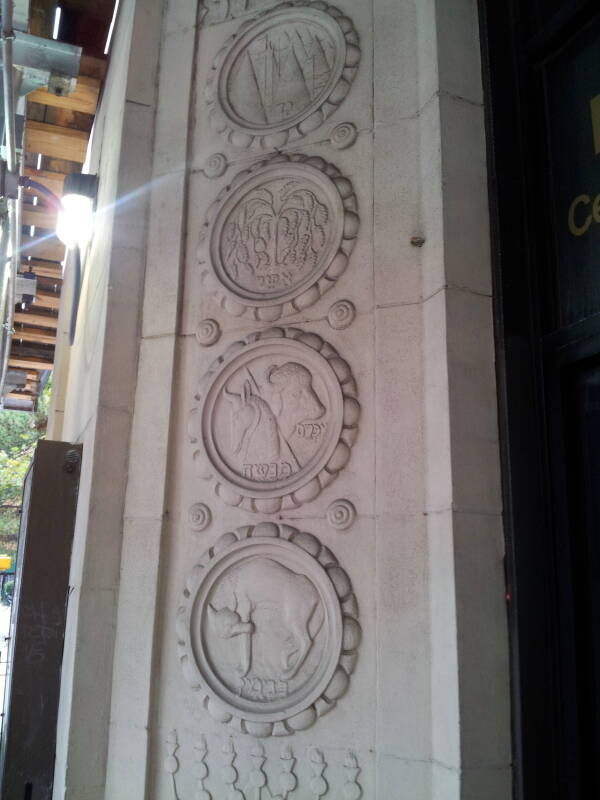
Symbols of the Tribes of Israel, top to bottom left of the door: Gad (tents), Asher (tree), Epraim and Menashe (bull and ox), Benjamin (wolf).
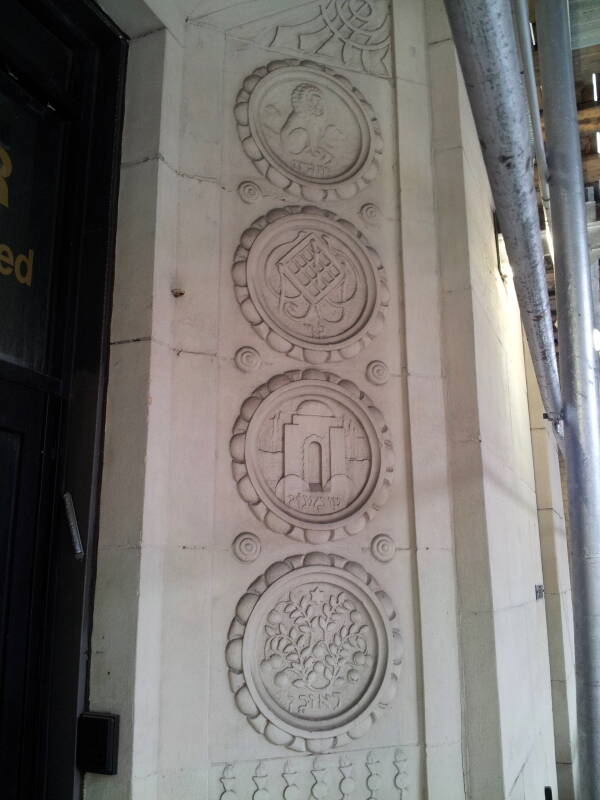
Symbols of the Tribes of Israel, top to bottom right of the door: Judah (lion), Levi (high priest's breastplate), Simon (city gate), Reuben (mandrake).
Its doorway is lined with symbols of the 12 tribes of Israel. Four to the left, four to the right, and four above.
The Bialystoker Center closed in 2011 due to funding problems. The remaining 95 residents had to be moved to new facilities.
The home had originally been supported by donations from families connected to the city of Białystok in Poland. More recently, it almost entirely depended on Medicaid and Medicare. Those sources weren't reimbursing enough to cover the expenses. The facilities were outdated, lowering the Medicaid reimbursement rates. In addition, there was a small area per floor and so state laws required more expensive staffing.
Forward Building
The Jewish Daily Forward, or Forvets in Yiddish, was founded in 1897 as a Yiddish-language newspaper promoting social reform. It also worked to familiarize its readers with American culture and customs. There were several Yiddish newspapers in the early 1900s but Forvets was the largest, with a circulation of 250,000 in the 1920s. In 1912 it moved into this ten-story building.
Leon Trotskyin New York
It was a socialist paper, there are carved portraits of the prominent Karl Marx and Friedrich Engels, along with the German-Jewish socialist Ferdinand Lasalle (plus a fourth figure of disputed identity) on the façade on either side of the building's name. Leon Trotsky wrote for Forvets during his time in New York. The Forvets was still publishing in 1974 when it moved its offices uptown.
The building has now been converted into condominiums.
There is still a significant Jewish presence in the neighborhood, but it is nowhere near what it was in the early 1900s. There are about a dozen synagogues in the neighborhood today, but that's down from about 500 in the early 1900s!



Forward Building, 175 East Broadway at Canal.
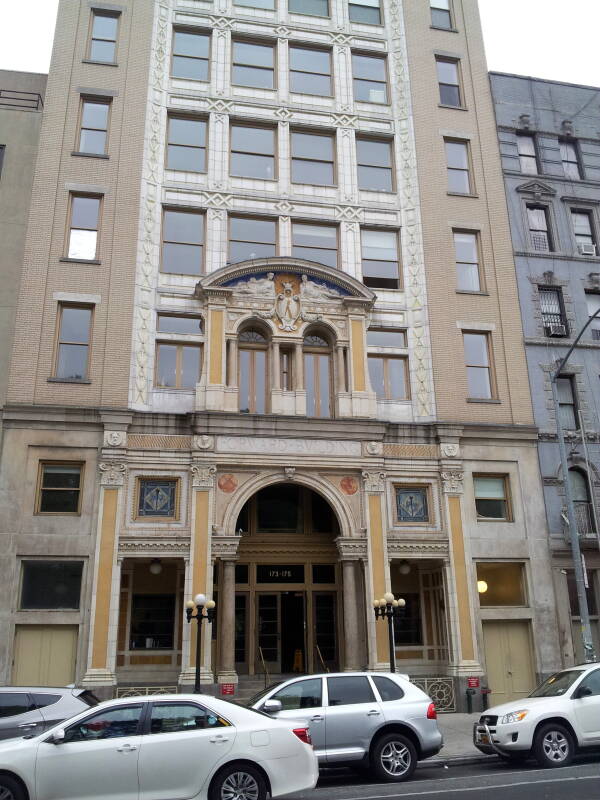
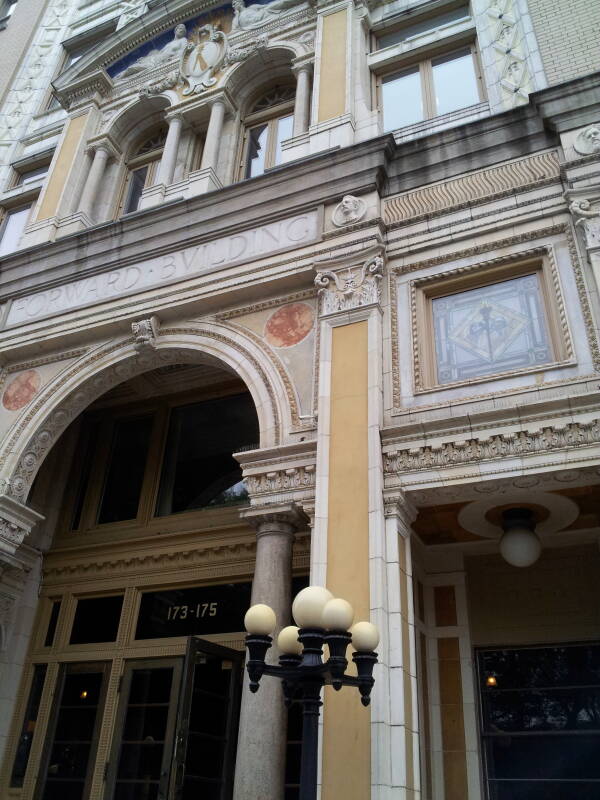
Educational Alliance
The Educational Alliance was founded as a community center in 1889. It provided area immigrants with a library, art classes, and language classes and other assistance with learning American culture and customs. It has evolved over the years and still provides a wide range of social services to today's neighborhood residents.
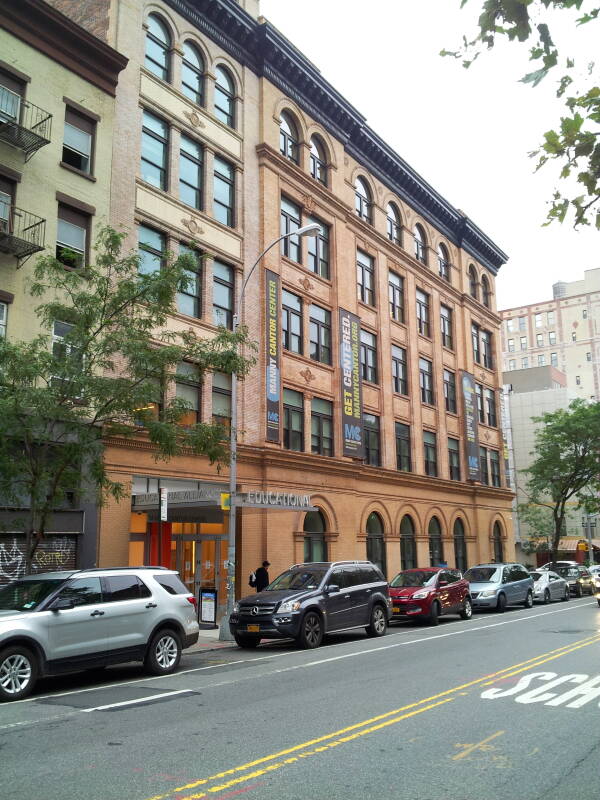
Educational Alliance, 197 East Broadway.
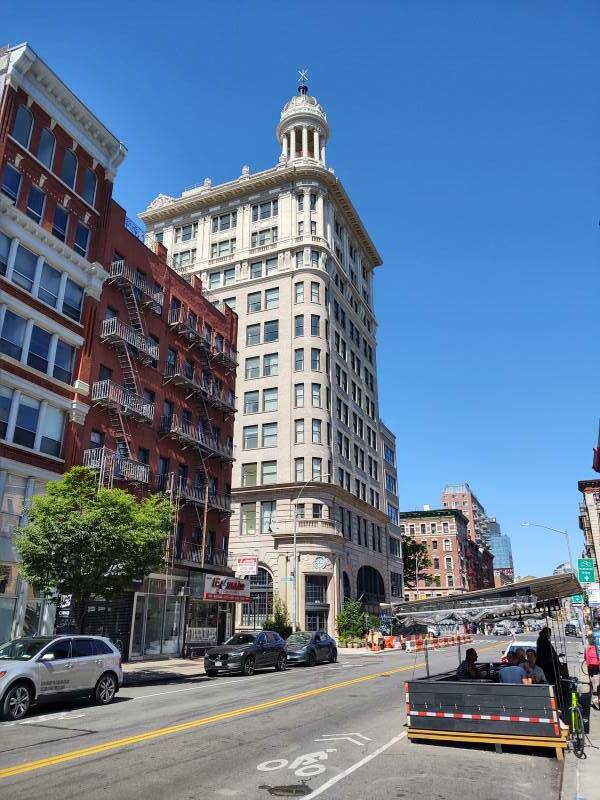
Jarmulowsky Bank Building at Canal Street and Orchard Street.
Jarmulowsky Bank
Sender Jarmulowsky was a Jewish immigrant from Poland who founded a bank in the early 1870s. Forty years later, when this building was completed in 1912, it was one of the largest banks in New York.
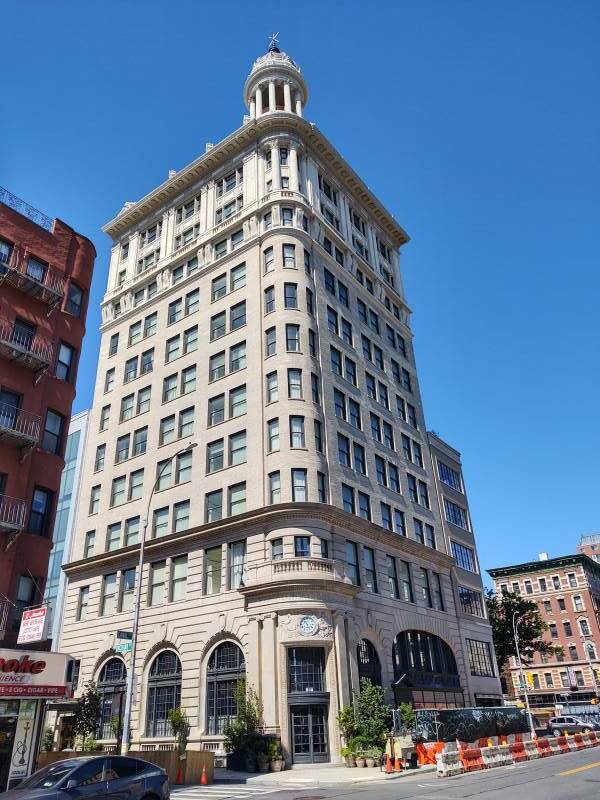
Jarmulowsky Bank Building at Canal Street and Orchard Street.
Just a few years later, World War One broke out in Europe. Many of the immigrants using the bank withdrew all their savings and closed their accounts in order to send money to relatives back home in eastern Europe. This led to the bank's collapse. Now the ground floor is occupied by small retail businesses. The bank building is at 54 Canal Street between Hester and Division.

